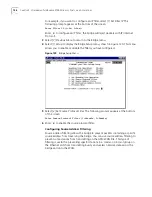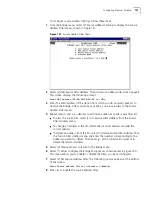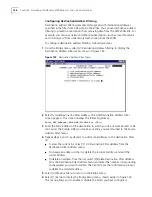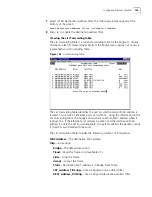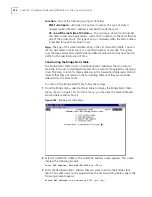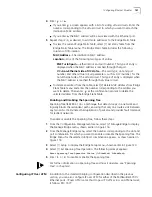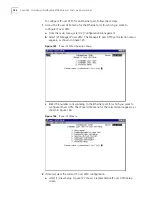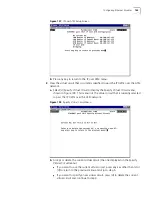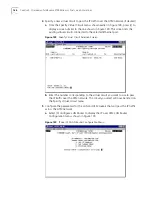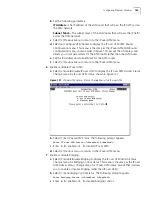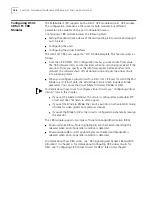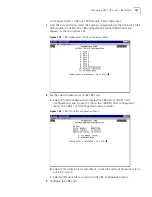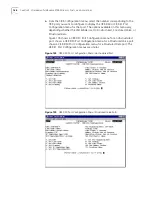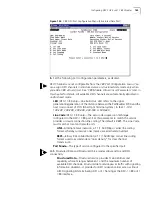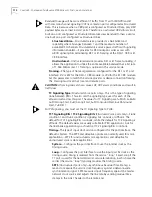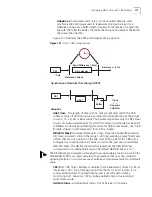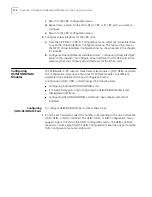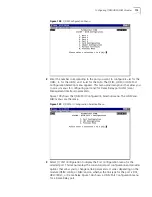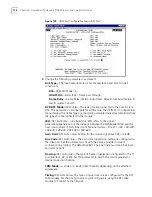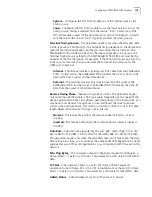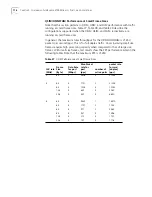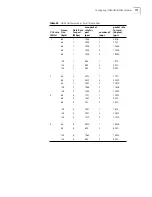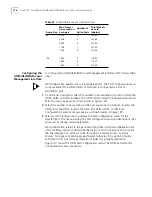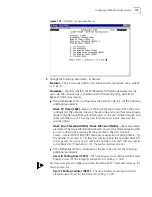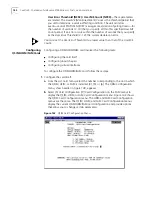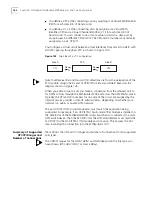
170
C
HAPTER
5: C
ONFIGURING
P
ATH
B
UILDER
S700 M
ODULES
, P
ORTS
,
AND
A
PPLICATIONS
Bandwidth usage will be more efficient if traffic from T1 with ISDN PRI and E1
with common channel signaling (CCS) is carried on ports configured as
Structured
Data
. This is because when a CBR port is configured as
Structured Data
, only DS0
payload bytes are carried in AAL1 cells. Therefore, an activated CBR virtual circuit
built on a port configured as
Structured Data
takes less bandwidth then a similar
one built on a port configured as
Structured Voice
.
Structured Voice
—Structured service provides N x 56 kbit/second
capability, where N ranges between 1 and the maximum number of
available DSO channels. Structured voice service passes traffic with signaling
information enabled—it provides for DSO midspan carrier access
with
ABCD signaling bits terminating DS1 or E1 framing at the DSX-1 CBR or E1
CBR interface.
Unstructured
—Unstructured service provides DS1 or E1 frame tunneling; it
allows the application to utilize the entire available bandwidth at a bit rate
of 1.544 Mb/second. T1 framing is optional in this service mode.
Framing
—The type of frame organization configured for the DS1 or E1 port
interface:
D4
or
ESF
for the DSX-1 CBR module;
G.704
for the E1 CBR module.
Set this parameter to match the service provider or device connection framing.
The
Framing
must match at local and remote ports.
CAUTION:
A framing mismatch can cause LOF, OOF alarm conditions and result in
traffic loss.
TC Signaling Type
(Structured Voice ports only)—This is the type of signaling
done between PBXs. This also sets the signaling type used for each of the
virtual circuits across this port. The values for TC Signaling are 1=PLAR, 2=E&M,
3=FXO-Loop Start, 4=FXS-Loop Start, 5=FXO-Ground Start, 6=FXS-Ground
Start, 7=R2(E1)
For PRI signaling, you must set the TC Signaling Type to
PLAR
.
TC1 Signaling Bits / TC2 Signaling Bits
(Structured Voice ports only)—Trunk
condition 1 and trunk condition 2 signaling bits:
onhook
or
offhook
. The
default for TC1 Signaling Bits is
onhook
, while the default for TC2 Signaling is
offhook
. The default values are usually suitable for PBX applications, but for
channel bank applications you should set TC2 Signaling Bits to onhook.
Timing—
The type of input clock service configured for the port interface. The
default is
System
. The
SRTS
and
Adaptive
options are normally used for voice
applications—
SRTS
for unstructured voice applications and
Adaptive
for
unstructured voice or data applications.
System
—Configures the port interface to use the internal clock as the
timing source.
Loop
—Configures the port interface to use the input port Rx clock as the
timing source; timing is received from the service “loop.” Select Loop if the
T1 port is used for the network/carrier service termination, in which case the
carrier (the service “loop”) typically provides the timing source.
SRTS
(Unstructured ports only)—Synchronous Residual Time Stamp; a
means to measure the service clock frequency against a network-wide
synchronization signal. SRTS measures input frequency against the master
network clock source and adjusts the line rate by sending residual time
stamps in the AAL1 header to the remote end.
Содержание 3C63400-3AC-C - PathBuilder S700 Switch
Страница 14: ...xiv CHAPTER SUPPLEMENTARY REGULATORY INFORMATION ...
Страница 18: ...4 ABOUT THIS GUIDE ...
Страница 28: ...14 CHAPTER 1 SYSTEM DESCRIPTION ...
Страница 88: ...74 CHAPTER 3 GETTING STARTED ...
Страница 260: ...246 CHAPTER 6 PATHBUILDER S700 DIAGNOSTICS AND PERFORMANCE MONITORING ...
Страница 270: ...256 INDEX ...

